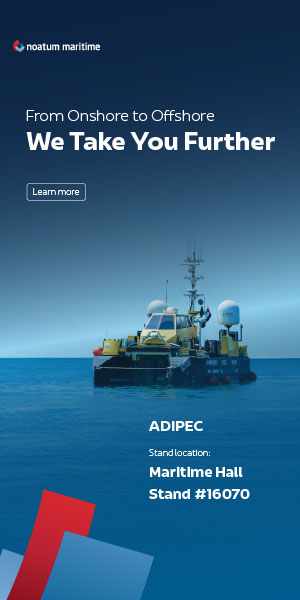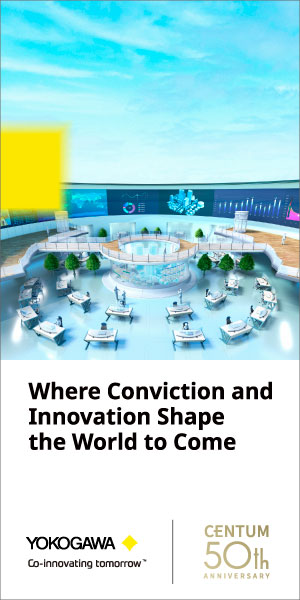
By streamlining offshore operations, W2W systems enhance personnel safety while cutting down greenhouse gas emissions. (image source: Ampelmann)
Ampelmann, the leading offshore access provider that delivers safe and efficient access solutions to the global offshore energy sector, outlines how gangways can support Middle Eastern ESG goals
The oil & gas sector in the Middle East is undergoing a pivotal change. Calls to facilitate socially and environmentally conscious business practices have become more pronounced and regulatory measures have been taken to encourage the industry to improve its Environmental, Social and Governance performance (ESG). Safety, decarbonisation and shrinking environmental footprints now drive decision making across the Middle East.
With considerable expansion in the Arabian Gulf, Arabian Sea and Gulf of Oman announced for 2026, these measures will have a profound impact on a key offshore oil & gas market. But ESG alignment will require new technology, its implementation and a recalibration of existing practices. One crucial, often overlooked aspect of offshore operations with much room for improvement is the utilisation of motion compensated gangways, commonly known as Walk to Work (W2W) systems, to transfer crew and cargo to their worksites on offshore installations.
Sustained by safety
Safety is a core pillar of the modern offshore industry and a key component of ESG performance. Before Ampelmann introduced the Middle East to W2W nearly fifteen years ago, the only way to transfer personnel directly from a vessel to an offshore platform and back was by using rudimentary static gangways, ropes, baskets, or by jumping across when conditions allowed it. Prone to delays and not without risks, for good reasons, W2W solutions have gradually been adopted throughout the Middle East as a safer and more cost-effective alternative.
Seas are always unpredictable. Even in the somewhat calmer sea conditions around the Arabian Peninsula, they can change at a moment’s notice and seasonal weather, like the Shamals, can cause severe operational disruptions. Modern high-tech gangway systems compensate for the motions a vessel makes in real time. Because of this, they can continue to operate in adverse weather – minimising delays caused by waiting on ideal conditions and ensuring personnel can reach their worksites without the risks commonly associated with marine based transfers.
By enabling high workability, W2W solutions optimise vessel usage and unlock more hands-on tool time, streamlining year-round productivity. Through enhanced safety, they improve operational efficiency, further supporting ESG goals by reducing idle time, fuel consumption, and unnecessary crew movements – especially when compared to other types of transfers.
The future is electric
W2W can play a vital role in reducing the environmental footprint of offshore operations. Ampelmann offers a range of gangway systems designed to meet the region’s specific conditions. Both the L-type, a lightweight electric gangway for smaller vessels, and the hexapod-stabilising A-type that compensates for motions in six degrees of freedom (6DOF), see much demand in the region.
While these systems have already transferred more than three million personnel for clients in Saudi Arabia, Qatar, Oman, UAE and Azerbaijan, Ampelmann is also committed to decarbonisation by implementing new technologies. By integrating electro-hydraulics, energy capture and composite materials the company has developed lighter and more energy efficient gangways. Through the process of electrification, the company has significantly reduced the carbon footprint of its new-build systems.
The transition towards a fully electric portfolio is yielding results. Electric versions of the flagship A-type are already operational, with several more to be launched within the year. Matching the performance of its hydraulic counterpart, the Electric A requires no HPU, consumes 80% less energy and can hoist cargo up to 400 kilograms. Though fully electric W2W will take time, innovation will remain at the forefront of W2W solutions.
Governed by service
While innovation drives these solutions, it is the underlying knowledge, expertise and support networks that power them. Their value depends on the services that keep them operating at peak performance – from localised service and maintenance to data tracking tools.
Ampelmann’s long standing presence in the region has enabled the company to provide strong localised support to ensure its systems always perform at peak capacity. Through its local office in Qatar, storage facilities in both Qatar and the United Arab Emirates (UAE) and a 24/7 global support network managed by the Operation Control Center (OCC), the company ensures that its sold and rental fleet in the region have a technical uptime of more than 99 percent.
Complementing this operational support, the company also provides its clients with access to its digital platform – Ampelmann Insights. This proprietary data tracking tool includes workability forecasts and options to review the performance of W2W operations. Digital services such as these can be used to find bottlenecks, improve operational efficiencies and identify new ways to reduce environmental footprints.

Sustainable solutions
‘Offshore safety’ and ‘environmental responsibility’ are not just industry buzzwords, they are critical, achievable goals and the cornerstone of Ampelmann’s W2W solutions. By streamlining offshore operations, these systems enhance personnel safety while cutting down greenhouse gas emissions. Supported by continuous innovation, electrification and all-round services, W2W will be critical to achieve ESG alignment across the Middle East.














